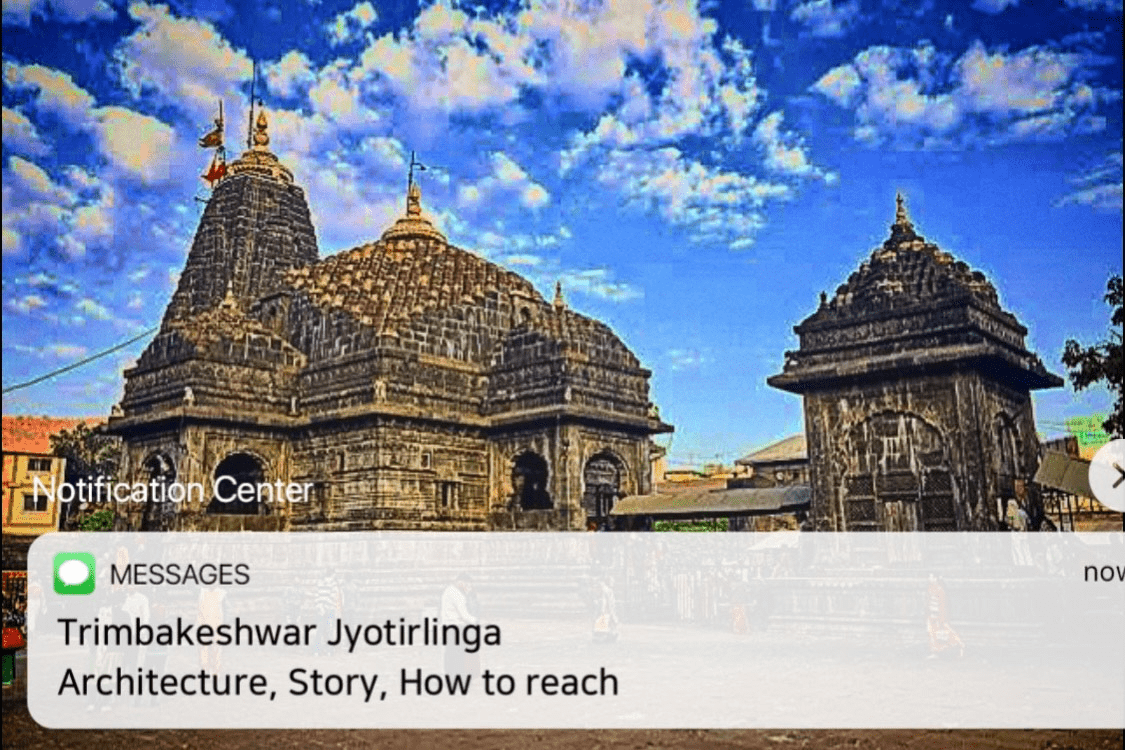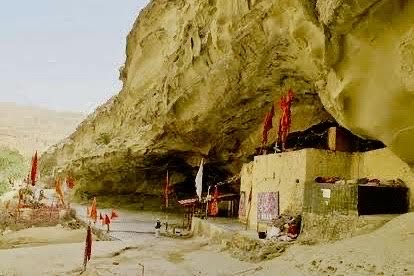The Nageshwar Jyotirlinga Temple is one of the twelve Jyotirlinga shrines dedicated to Lord Shiva, a significant deity in Hinduism. Here are some key details about the Nageshwar Jyotirlinga Temple:
Location:
The Nageshwar Jyotirlinga Temple is located near Dwarka in the state of Gujarat, India. It is situated on the route between Dwarka city and Beyt Dwarka Island.
Significance:
Nageshwar is one of the twelve Jyotirlingas, which are considered sacred representations of Lord Shiva. The Linga at this temple is known as Nagnath or Nageshwar, signifying the Lord as the ‘Lord of Snakes.’
Legend:
According to Hindus, there is a legend associated with the Nageshwar Jyotirlinga. It is said that a demon named Daruka imprisoned a Shiva devotee named Supriya. To rescue Supriya and eliminate the demon, Lord Shiva manifested as Nageshwar Jyotirlinga.
Temple Structure:
The temple complex houses the main Nageshwar Jyotirlinga shrine along with other smaller shrines dedicated to various deities. The Linga is adorned with traditional Shiva offerings and rituals.
Architecture:
The architectural style of the Nageshwar Jyotirlinga Temple reflects the cultural and religious heritage of the region. The temple structure is designed in a way that complements the spiritual ambiance of the sacred site.
Key architectural features of the Nageshwar Jyotirlinga Temple:
1.Shikhara (Tower):
The temple typically features a shikhara, a towering structure that symbolizes the sacred mountain abode of the gods. The shikhara is often adorned with intricate carvings and sculptures.
2.Mandap (Pavilion):
The entrance or main hall of the temple is often a mandapa, a pillared pavilion where devotees gather for prayers and rituals. The mandapa is designed to provide a space for community worship.
3.Garbhagriha (Sanctum Sanctorum):
The sanctum sanctorum houses the main Nageshwar Jyotirlinga. Devotees offer prayers and perform rituals in this central sacred space. The sanctum is designed to create a sense of intimacy with the deity.
4.Nandi Mandap
Many Shiva temples, including those dedicated to Jyotirlingas, have a Nandi mandap, which is a pavilion featuring a statue of Nandi, the sacred bull and vehicle of Lord Shiva. Nandi is often positioned facing the main sanctum.
5.Carvings and Sculptures
The exterior and interior of the temple may be adorned with intricate carvings and sculptures depicting various mythological themes, deities, and scenes from Hindu scriptures. These artistic elements contribute to the aesthetic appeal of the temple.
6.Traditional Elements:
The architecture often incorporates traditional elements such as kalasha (pot-like finial), amalaka (circular stone disk), and decorative motifs that are characteristic of Hindu temple architecture.
7.Color Palette:
The color palette used in the temple architecture is usually vibrant, with a combination of colors that hold cultural and symbolic significance in Hindu traditions.
8.Overall Design Philosophy:
The architectural design follows the principles of Vastu Shastra, an ancient Indian architectural tradition that aims to harmonize the temple with cosmic energies and create a sacred and spiritually uplifting space.
9.Pilgrimage Circuit:
Temples dedicated to Jyotirlingas are often part of pilgrimage circuits, and the design of the Nageshwar Jyotirlinga Temple may take into consideration the flow of pilgrims and the creation of a serene atmosphere for worship.
It’s important to note that the specific architectural details may vary, and renovations or modifications may occur over time. The beauty and significance of the Nageshwar Jyotirlinga Temple lie not only in its architectural features but also in its spiritual and religious importance for devotees.
Importance for Devotees:
Devotees visit the Nageshwar Jyotirlinga Temple to seek the blessings of Lord Shiva and to perform rituals and prayers. The pilgrimage to Jyotirlinga shrines is considered spiritually significant in Hinduism.
The religious story associated with the Nageshwar Jyotirlinga is rooted in Hindus and is connected to the divine manifestations of Lord Shiva. The legend highlights the significance of the Jyotirlinga and its role in protecting devotees.
The religious story:
Legend of Nageshwar Jyotirlinga:
Demon Daruka and Shiva Devotee Supriya: According to the legend, there was a powerful demon named Daruka who was causing havoc. He had imprisoned a Shiva devotee named Supriya.
upriya’s Devotion: Supriya, while in captivity, continued to pray fervently to Lord Shiva. Despite the challenging circumstances, his unwavering devotion caught the attention of the divine.
Lord Shiva’s Manifestation: In response to Supriya’s prayers and the need to vanquish the demon, Lord Shiva manifested as the Nageshwar Jyotirlinga in the Darukavana forest. Nageshwar is another name for Lord Shiva, emphasizing his association with serpents.
Destruction of Demon Daruka: The powerful form of Lord Shiva as Nageshwar emerged to confront the demon Daruka. In a divine battle, Lord Shiva defeated Daruka, thereby freeing Supriya from captivity and restoring peace to the region.
Destruction of Demon Daruka: The powerful form of Lord Shiva as Nageshwar emerged to confront the demon Daruka. In a divine battle, Lord Shiva defeated Daruka, thereby freeing Supriya from captivity and restoring peace to the region.
Devotees' Observances:
Pilgrims visit the Nageshwar Jyotirlinga Temple to offer prayers and seek the divine blessings of Lord Shiva. The temple becomes a place of reverence, where devotees express their devotion and gratitude.
The story of Nageshwar Jyotirlinga underscores the compassionate nature of Lord Shiva, who responds to the sincere prayers of his devotees and protects them from adversities.
Festivals:
The temple witnesses increased footfall during major Hindu festivals, especially during the Maha Shivaratri festival when devotees participate in special prayers and celebrations.
Maha Shivaratri:
Significance: Maha Shivaratri, meaning the “Great Night of Shiva,” is dedicated to Lord Shiva and is celebrated on the 14th night of the lunar month of Phalguna or Maagh (usually February or March).
Night Vigil: Devotees observe a night-long vigil, engaging in prayers, chants, and hymns dedicated to Lord Shiva. It is believed that staying awake and immersed in devotion during this night is auspicious and brings spiritual merit.
Rituals: Special rituals and ceremonies are performed at the Nageshwar Jyotirlinga Temple on Maha Shivaratri. Devotees offer bilva leaves, milk, honey, water, and other sacred items to the Shiva Linga as a mark of reverence.
Devotional Singing and Dancing: Many devotees engage in devotional singing and dancing, expressing their love and devotion to Lord Shiva. The atmosphere is often filled with joyous chants and spiritual fervor.
Aarti: The temple may conduct a Mahadeepa Aarti, where a large lamp or deepa is lit as a symbolic representation of the divine light of Lord Shiva.
Pilgrimage: Maha Shivaratri attracts a significant number of pilgrims to the Nageshwar Jyotirlinga Temple. Devotees from various regions visit the temple to seek the divine blessings of Lord Shiva on this auspicious occasion.
Fasting: Some devotees observe fasting during Maha Shivaratri as a form of penance and to purify the body and mind. The fast is often broken the next day after the completion of the night vigil
While Maha Shivaratri is the major festival, other Hindu festivals and auspicious occasions may also be celebrated at the temple with specific rituals and ceremonies.
Accessibility:
The Nageshwar Jyotirlinga Temple is accessible by road from Dwarka. Dwarka itself is well-connected by road and rail networks.
नागेश्वर ज्योतिर्लिंग मंदिर
नागेश्वर ज्योतिर्लिंग मंदिर हिंदू धर्म के एक महत्वपूर्ण देवता भगवान शिव को समर्पित बारह ज्योतिर्लिंग मंदिरों में से एक है। यहां नागेश्वर ज्योतिर्लिंग मंदिर के बारे में कुछ मुख्य विवरण दिए गए हैं:
जगह: नागेश्वर ज्योतिर्लिंग मंदिर भारत के गुजरात राज्य में द्वारका के पास स्थित है। यह द्वारका शहर और बेयट द्वारका द्वीप के बीच मार्ग पर स्थित है।
महत्व: नागेश्वर बारह ज्योतिर्लिंगों में से एक है, जिन्हें भगवान शिव का पवित्र प्रतिनिधित्व माना जाता है। इस मंदिर के लिंग को नागनाथ या नागेश्वर के नाम से जाना जाता है, जो भगवान को ‘सांपों के भगवान’ के रूप में दर्शाता है।
दंतकथा: हिंदुओं के अनुसार नागेश्वर ज्योतिर्लिंग से जुड़ी एक पौराणिक कथा है। कहा जाता है कि दारुका नामक राक्षस ने सुप्रिय नामक शिव भक्त को कैद कर लिया था। सुप्रिय को बचाने और राक्षस को खत्म करने के लिए, भगवान शिव नागेश्वर ज्योतिर्लिंग के रूप में प्रकट हुए।
मंदिर की संरचना: मंदिर परिसर में मुख्य नागेश्वर ज्योतिर्लिंग मंदिर के साथ-साथ विभिन्न देवताओं को समर्पित अन्य छोटे मंदिर भी हैं। लिंग को पारंपरिक शिव प्रसाद और अनुष्ठानों से सजाया जाता है। वास्तुकला: नागेश्वर ज्योतिर्लिंग मंदिर की स्थापत्य शैली क्षेत्र की सांस्कृतिक और धार्मिक विरासत को दर्शाती है। मंदिर की संरचना इस तरह से डिज़ाइन की गई है जो पवित्र स्थल के आध्यात्मिक माहौल को पूरक बनाती है।
नागेश्वर ज्योतिर्लिंग मंदिर की प्रमुख स्थापत्य विशेषताएं: शिखर (टॉवर): मंदिर में आमतौर पर एक शिखर होता है, एक ऊंची संरचना जो देवताओं के पवित्र पर्वत निवास का प्रतीक है। शिखर को अक्सर जटिल नक्काशी और मूर्तियों से सजाया जाता है। मंडप (मंडप): मंदिर का प्रवेश द्वार या मुख्य हॉल अक्सर एक मंडप होता है, एक स्तंभित मंडप जहां भक्त प्रार्थना और अनुष्ठानों के लिए इकट्ठा होते हैं। मंडप को सामुदायिक पूजा के लिए स्थान प्रदान करने के लिए डिज़ाइन किया गया है।
गर्भगृह (गर्भगृह): गर्भगृह में मुख्य नागेश्वर ज्योतिर्लिंग है। भक्त इस केंद्रीय पवित्र स्थान पर प्रार्थना करते हैं और अनुष्ठान करते हैं। गर्भगृह को देवता के साथ घनिष्ठता की भावना पैदा करने के लिए डिज़ाइन किया गया है। नंदी मंडप: ज्योतिर्लिंगों को समर्पित मंदिरों सहित कई शिव मंदिरों में एक नंदी मंडप होता है, जो एक मंडप है जिसमें भगवान शिव के पवित्र बैल और वाहन नंदी की मूर्ति होती है। नंदी को अक्सर मुख्य गर्भगृह की ओर मुख करके स्थापित किया जाता है।
नक्काशी और मूर्तियां: मंदिर के बाहरी और आंतरिक भाग को विभिन्न पौराणिक विषयों, देवताओं और हिंदू धर्मग्रंथों के दृश्यों को दर्शाती जटिल नक्काशी और मूर्तियों से सजाया जा सकता है। ये कलात्मक तत्व मंदिर की सौंदर्यात्मक अपील में योगदान करते हैं।
पारंपरिक तत्व: वास्तुकला में अक्सर कलश (बर्तन जैसा पंख), अमलाका (गोलाकार पत्थर की डिस्क), और सजावटी रूपांकनों जैसे पारंपरिक तत्व शामिल होते हैं जो हिंदू मंदिर वास्तुकला की विशेषता हैं।
रंग पैलेट: मंदिर वास्तुकला में उपयोग किया जाने वाला रंग पैलेट आमतौर पर जीवंत होता है, जिसमें रंगों का संयोजन होता है जो हिंदू परंपराओं में सांस्कृतिक और प्रतीकात्मक महत्व रखता है।
समग्र डिजाइन दर्शन: वास्तुशिल्प डिजाइन वास्तु शास्त्र के सिद्धांतों का पालन करता है, जो एक प्राचीन भारतीय वास्तुशिल्प परंपरा है जिसका उद्देश्य मंदिर को ब्रह्मांडीय ऊर्जाओं के साथ सामंजस्य बनाना और एक पवित्र और आध्यात्मिक रूप से उत्थानकारी स्थान बनाना है।
तीर्थयात्रा सर्किट: ज्योतिर्लिंगों को समर्पित मंदिर अक्सर तीर्थयात्रा सर्किट का हिस्सा होते हैं, और नागेश्वर ज्योतिर्लिंग मंदिर का डिज़ाइन तीर्थयात्रियों के प्रवाह और पूजा के लिए एक शांत वातावरण के निर्माण को ध्यान में रख सकता है। यह ध्यान रखना महत्वपूर्ण है कि विशिष्ट वास्तुशिल्प विवरण भिन्न हो सकते हैं, और समय के साथ नवीनीकरण या संशोधन हो सकते हैं। नागेश्वर ज्योतिर्लिंग मंदिर की सुंदरता और महत्व न केवल इसकी स्थापत्य विशेषताओं में बल्कि भक्तों के लिए इसके आध्यात्मिक और धार्मिक महत्व में भी निहित है।
भक्तों के लिए महत्व: भक्त भगवान शिव का आशीर्वाद लेने और अनुष्ठान और प्रार्थना करने के लिए नागेश्वर ज्योतिर्लिंग मंदिर जाते हैं। हिंदू धर्म में ज्योतिर्लिंग मंदिरों की तीर्थयात्रा को आध्यात्मिक रूप से महत्वपूर्ण माना जाता है। नागेश्वर ज्योतिर्लिंग से जुड़ी धार्मिक कहानी हिंदुओं में निहित है और भगवान शिव की दिव्य अभिव्यक्तियों से जुड़ी है। यह कथा ज्योतिर्लिंग के महत्व और भक्तों की रक्षा में इसकी भूमिका पर प्रकाश डालती है।
धार्मिक कथा: नागेश्वर ज्योतिर्लिंग की
पौराणिक कथा: दानव दारुका और शिव भक्त सुप्रिय: पौराणिक कथा के अनुसार, दारुका नाम का एक शक्तिशाली राक्षस था जो उत्पात मचा रहा था। उसने सुप्रिय नामक शिव भक्त को कैद कर लिया था।
सुप्रिया की भक्ति: कैद में रहते हुए भी सुप्रिय भगवान शिव की भक्तिपूर्वक प्रार्थना करता रहा। चुनौतीपूर्ण परिस्थितियों के बावजूद, उनकी अटूट भक्ति ने परमात्मा का ध्यान आकर्षित किया।
भगवान शिव की अभिव्यक्ति: सुप्रिय की प्रार्थनाओं और राक्षस को हराने की आवश्यकता के जवाब में, भगवान शिव दारुकावन जंगल में नागेश्वर ज्योतिर्लिंग के रूप में प्रकट हुए। नागेश्वर भगवान शिव का दूसरा नाम है, जो नागों के साथ उनके संबंध पर जोर देता है।
राक्षस दारुका का विनाश:
नागेश्वर के रूप में भगवान शिव का शक्तिशाली रूप राक्षस दारुका का सामना करने के लिए उभरा। एक दैवीय युद्ध में, भगवान शिव ने दारुका को हराया, जिससे सुप्रिय को कैद से मुक्त किया गया और क्षेत्र में शांति बहाल की गई।
नागेश्वर ज्योतिर्लिंग का महत्व: दारूकावन में स्थापित नागेश्वर ज्योतिर्लिंग बुराई पर अच्छाई की जीत का प्रतीक एक पवित्र स्थल बन गया। भक्तों का मानना है कि इस ज्योतिर्लिंग की पूजा करने से सुरक्षा, आशीर्वाद और बाधाओं से मुक्ति मिल सकती है।
भक्तों के अनुष्ठान: तीर्थयात्री नागेश्वर ज्योतिर्लिंग मंदिर में पूजा-अर्चना करने और भगवान शिव का दिव्य आशीर्वाद पाने के लिए जाते हैं। मंदिर श्रद्धा का स्थान बन जाता है, जहाँ भक्त अपनी भक्ति और कृतज्ञता व्यक्त करते हैं। नागेश्वर ज्योतिर्लिंग की कहानी भगवान शिव की दयालु प्रकृति को रेखांकित करती है, जो अपने भक्तों की ईमानदार प्रार्थनाओं का जवाब देते हैं और उन्हें प्रतिकूलताओं से बचाते हैं। त्यौहार: प्रमुख हिंदू त्योहारों के दौरान मंदिर में श्रद्धालुओं की संख्या बढ़ जाती है, खासकर महा शिवरात्रि त्योहार के दौरान, जब भक्त विशेष प्रार्थनाओं और समारोहों में भाग लेते हैं।
महा शिवरात्रि: महत्व: महा शिवरात्रि, जिसका अर्थ है “शिव की महान रात”, भगवान शिव को समर्पित है और फाल्गुन या माघ (आमतौर पर फरवरी या मार्च) के चंद्र महीने की 14 वीं रात को मनाई जाती है।
रात्रि जागरण: भक्त रात भर जागरण करते हैं, भगवान शिव को समर्पित प्रार्थनाओं, मंत्रों और भजनों में संलग्न होते हैं। ऐसा माना जाता है कि इस रात जागना और भक्ति में डूबे रहना शुभ होता है और आध्यात्मिक योग्यता प्राप्त होती है। अनुष्ठान: महा शिवरात्रि पर नागेश्वर ज्योतिर्लिंग मंदिर में विशेष अनुष्ठान और समारोह किए जाते हैं। भक्त श्रद्धा के प्रतीक के रूप में शिव लिंग पर बिल्व पत्र, दूध, शहद, पानी और अन्य पवित्र वस्तुएं चढ़ाते हैं।
भक्तिपूर्ण गायन और नृत्य: कई भक्त भगवान शिव के प्रति अपने प्रेम और भक्ति को व्यक्त करते हुए, भक्तिपूर्ण गायन और नृत्य में संलग्न होते हैं। वातावरण अक्सर आनंदमय मंत्रोच्चार और आध्यात्मिक उत्साह से भर जाता है। आरती: मंदिर महादीप आरती का आयोजन कर सकता है, जहां भगवान शिव की दिव्य रोशनी के प्रतीकात्मक प्रतिनिधित्व के रूप में एक बड़ा दीपक या दीया जलाया जाता है।
तीर्थयात्रा: महा शिवरात्रि पर नागेश्वर ज्योतिर्लिंग मंदिर में बड़ी संख्या में तीर्थयात्री आते हैं। इस शुभ अवसर पर भगवान शिव का दिव्य आशीर्वाद पाने के लिए विभिन्न क्षेत्रों से भक्त मंदिर में आते हैं।
उपवास: कुछ भक्त तपस्या के रूप में और शरीर और मन को शुद्ध करने के लिए महा शिवरात्रि के दौरान उपवास करते हैं। व्रत अक्सर रात्रि जागरण पूरा होने के बाद अगले दिन खोला जाता है। जबकि महा शिवरात्रि प्रमुख त्योहार है, अन्य हिंदू त्योहार और शुभ अवसर भी मंदिर में विशिष्ट अनुष्ठानों और समारोहों के साथ मनाए जा सकते हैं।
अभिगम्यता: नागेश्वर ज्योतिर्लिंग मंदिर तक द्वारका से सड़क मार्ग द्वारा पहुंचा जा सकता है। द्वारका स्वयं सड़क और रेल नेटवर्क से अच्छी तरह जुड़ा हुआ है




good
GREAT